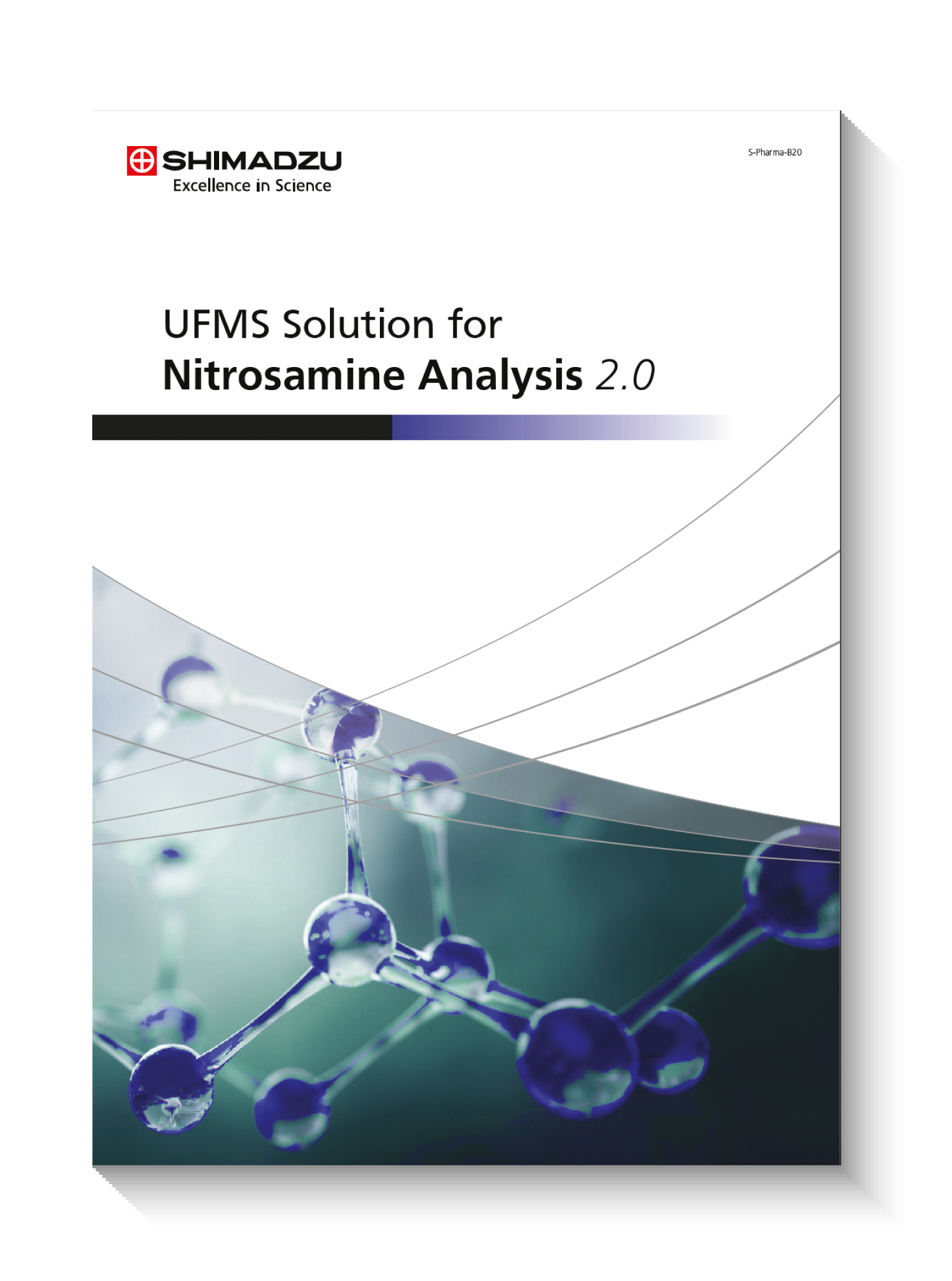Towards Drug Safety and Efficacy: Testing, Regulation and Analysis of Nitrosamines in Pharmaceutical Drugs

Nitrosamines, specifically N-nitrosamines, refer to molecules containing the nitroso functional group. Due to their classification as probable human carcinogens, nitrosamines attract much scrutiny within the scientific community. While these compounds are naturally occurring in certain foods and drinking water, their presence in medicinal products is deemed unacceptable. Nitrosamines are believed to enter finished products as a result of drug substance manufacturing processes.
Subsequent investigations have revealed that the origin of nitrosamines may extend beyond the manufacturing phase to include factors such as the chemical structure of active pharmaceutical ingredients (APIs) or the conditions in which they are stored and packaged. Read on for more information about nitrosamines as an emerging contaminant concern, its relevant regulations and testing methods involved in their detection.
Download UFMS Solution for Nitrosamine Analysis 2.0 to access the comprehensive guide to nitrosamine impurity screening, or read on for more insights!
Download Nitrosamine Analysis 2.0 eBook Here
Nitrosamine Formation

Formation of nitrosamines is possible in the presence of secondary, tertiary, or quaternary amines and nitrite salts under acidic reaction conditions. Under these conditions, nitrite salts may form nitrous acid, which can react with an amine to form a nitrosamine. Apart from these there are other routes such as vendor-sourced starting materials and raw materials; recovered solvents, catalysts and reagents; cross contamination from common manufacturing facility; quenching process using nitrous acid; and packing/storage; which may result in nitrosamines formation or contamination.
Regulations on Nitrosamine Impurities

In July 2018, the U.S. Food and Drug Administration (FDA) announced that the carcinogenic impurities NDMA and NDEA were detected in valsartan bulk drug substances. Further Investigations showed presence of other nitrosamines such as NDIPA, NEIPA, NMBA and NDBA in various Angiotensin II Receptor Blockers (ARBs). This resulted in many lots of ARBS being recalled.
Not long after, in September 2019, ranitidine was suspected of being contaminated with NDMA. Ranitidine is a prescription and over-the-counter drug used to treat acid reflux. This was based on findings that levels of NDMA in ranitidine may increase to unacceptable levels over time and when exposed to higher than room temperature. Eventually, FDA requested withdrawal of all remaining prescription and OTC ranitidine products from the U.S. market.
In early 2020, FDA started investigation for presence of NDMA impurity in metformin approved for sale in the U.S. Metformin is a prescription drug used to control high blood sugar in patients with type 2 diabetes. FDA testing found NDMA (above the agency's acceptable intake limit) in certain lots of extended release (ER) metformin and had recommended companies recall lots with levels of NDMA above the acceptable intake limit of 96 nanograms per day.
Additionally, FDA has also investigated presence of 1-Methyl-4-Nitrosopiperazine (MNP) in Rifampin and 1-Cyclopentyl-4-Nitrosopiperazine (CPNP) in rifapentine drug substance and drug products. These are antibacterial drugs used to treat tuberculosis.
Analysis of nitrosamine impurities at trace levels possess many challenges in terms of solubility of nitrosamines and drug substance/drug products, thermal stability of nitrosamine etc. and may require more than one analytical technique. Shimadzu's highly sensitive UFMS technologies LC-MS/MS and GC-MS/MS powered by Analytical Intelligence offer a wholesome solution for quantification of trace levels of nitrosamine impurities from various drug substances, drug products, solvents etc.
Download Nitrosamine Analysis 2.0 eBook Here
Testing Methods for Detecting the Presence of Nitrosamine Impurities

- Analytical Methods for Quantification of Nitrosamine Impurities at Trace Levels
Holistic solutions to measurement of nitrosamines need both GC-MS/MS and LC-MS/MS technologies. At Shimadzu, we have developed future proof methods for anticipated challenges such as ever-changing sensitivity levels, inclusion of other nitrosamines, and sample preparation. Read on to find out the various aspects of our solutions, or download the eBook directly here.
- Nitrosamine Analysis in Sartan Medicines
Proposed United States Pharmacopeia (USP) General chapter 1469 aligns with current scientific and regulatory approaches to ensure the appropriate control of nitrosamine impurities in drug substances and drug products. The objective of this standard is to provide a science-based approach for the control of nitrosamine impurities, eliminating or reducing their presence in drug products.
- Nitrosamine Analysis in Metformin
Shimadzu's comprehensive solutions details the analysis of nitrosamine in metformin drug substance, drug products and placebo. Examples include the analysis of NDMA, NMBA, NDEA, NEIPA, NDIPA, NDPA, NDBA and NMPA in metformin ER tablets and placebo using in-house developed methods with liquid-liquid extraction being employed for sample preparation.
- Nitrosamine Analysis in Other APIs
Levels of NDMA in ranitidine may increase to unacceptable levels over time and when exposed to higher than room temperatures. Based on these findings, ranitidine is withdrawn from US markets. In this eBook, Shimadzu offer solutions to analyze trace levels of NDMA in ranitidine drug substances using LCMS and methodology described by US FDA. Learn more here.
- Nitrosamine Analysis in Residual Solvents
Recovered materials such as solvents, reagents, and catalysts pose a risk of nitrosamine impurities due to the presence of residual amines (such as trimethylamine or diisopropylethylamine). Quenching step (i.e., nitrous acid used to decompose residual azide) can be a potential source for introduction of nitrosamines during solvent recovery process.
Download Nitrosamine Analysis 2.0 eBook Here
Leveraging Shimadzu's Analytical Intelligence™ for Nitrosamine Impurities Analysis

With changes and upgradation of nitrosamine regulations, keeping up with method development, validation and regular analysis is a daunting task. Add to this new challenge of work from home and social distancing, it’s an uphill battle where laboratories must possess the capability of delivering reliable and robust results in time and continuously. Power your labs with chromatographic and mass-spectrometry technologies packed with Analytical Intelligence™ from Shimadzu.
Discover the robust functionalities of Shimadzu's Analytical Intelligence™ for enhanced confidence, convenience and efficiency in your laboratory work today.



